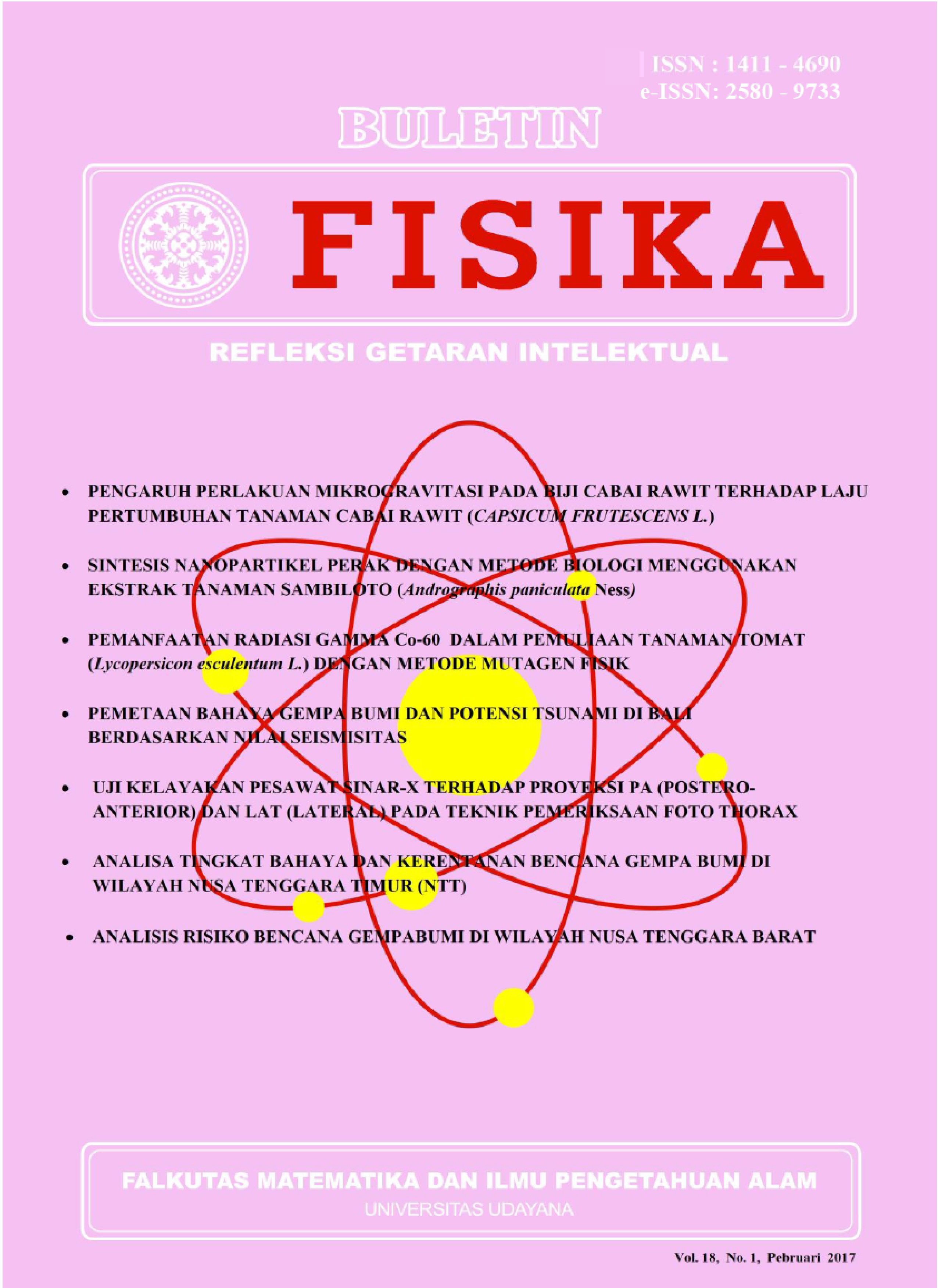STUDI SINTESIS NANOPARTIKEL PERAK DENGAN METODE BIOLOGI MENGGUNAKAN TANAMAN SAMBILOTO (Andrographis paniculata Ness)
Abstract
This study is report about the synthesis of silver nanoparticles (AgNP) using biological method (biosynthesis) using sambiloto plant extracts (Andrographis paniculata Ness). Plant part used is the leaves and extract process is done with demineralized water (aqua-dm). The synthesis is done at a ratio of AgNO3 solution with sambiloto extract solution is 10 µl : 10 ml. Characterization techniques that have been made include UV-Vis spectrophotometer, X-ray diffraction (XRD) and Transmission Electron Microscope (TEM). The results showed that silver nanoparticles formed has absorbance of SPR (surface plasmon resonance) peak at a wavelength of about 423 nm. XRD characterization of the structure obtained FCC (face center cubic) with a lattice parameter is 4.031 Å, diffraction peaks at 2q = 38,18o, 45,81o and 64,87o each corresponding to the (h k l) of (1 1 1), (2 0 0) and (2 2 0) respectively. TEM characterization obtained that the particle size distribution is 10 – 30 nm.











